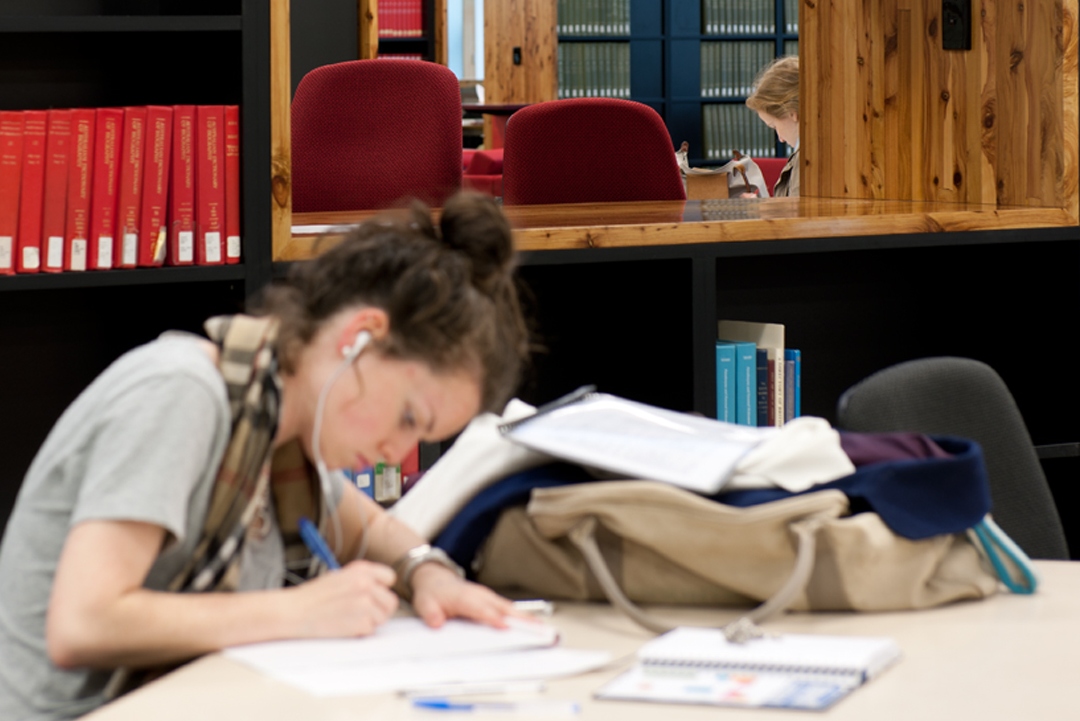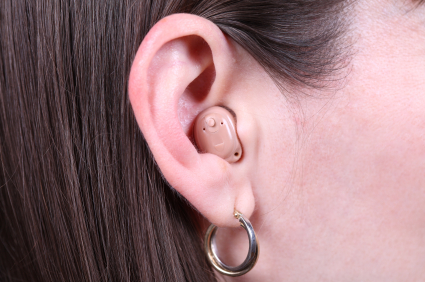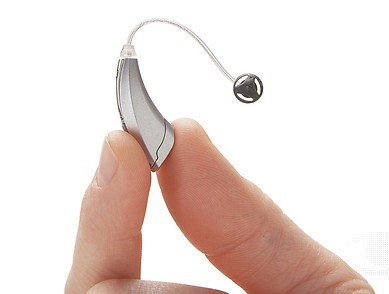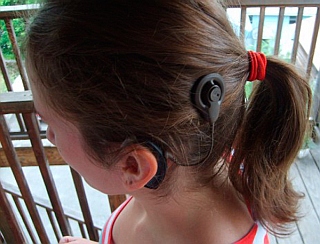Deaf and Hard of Hearing Students' Guide for Academics
Introduction
As a teacher or a fellow student, it is likely you will meet a handful of students who are deaf or hard of hearing during your academic lifetime. Here are some useful facts and information to help you understand and be more aware.
Need to Know Facts About Deaf Students
- There are several degrees of hearing loss ranging from mild to profound
- Mild
- Moderate
- Severe
- Profound
- They often wear a hearing aid or cochlear implant.
- They can use speech or signing to communicate. English is different to Auslan and deaf people may use both. People that are proficient in both English and Auslan are bilingual, but they will usually be more fluent in English, rather than in signing.
- When a student tells you that they are deaf, don’t hesitate to ask them more about it and work out what you can do to help improve their learning experience. Some good questions to ask are:
- What can I do to support you?
- What services are you currently receiving from disability support? (Some students receive captioning and note-taking support)
- Some people do not want to reveal that they are deaf.
- Reasons: they feel uncomfortable that they have to tell people that they can't hear well. Fear of stigma of society: people with hearing would treat the deaf students differently after they find out.
- What to do in this situation: Be understanding and empathetic, do not to push them out of their comfort zone. Let them know you are there to help, and that you'll respect their privacy.
- The learning experience for a student that’s hard of hearing can often be isolating, confusing and difficult, and even everyday conversations with their peers can be difficult.

During lectures: please don't call out our names!
Tips that all Deaf & Hearing Impaired Students want Teachers to Know
- Face us. We can lip read very well. Try not to look down or look away.
- Repeat questions and answers from other students in the class.
- Visual cues are a great for learning. Write essential points on the board. Especially with new words or concepts.
- Classroom layout for discussions: have the classroom set up in a semi or full circle. Straight rows facing the tutor are not ideal because we can’t see the faces of other students. when they are speaking
- Ensure lighting is sufficient so we can see your face and lip read(i.e. No lights during a film and a tutor is talking = struggles!)
- We miss majority of the information from a video unless there is captioning, so please provide captioning!
- Try and choose videos that have closed captions rather than auto-generated captions. Autogenerated captions are not accurate most of the time
- Provide breaks when possible – listening in class requires a lot of concentration and focus, it gets VERY TIRING from just one lecture!
- Indicate when the topic changes so that someone with hearing loss can start mentally preparing a vocabulary list that may be used. This will aid them to make more educated guesses if they have trouble hearing and need to fill in the gaps.
- DON’T exaggerate your speech! Talk clearly and normally or we will think that you look stupid.
- Don't try to “test” us by covering your mouth or whispering, this is rather annoying and you will seem insensitive. We are not there for you to experiment on
- Don't discuss our needs in front of the class. If we have emailed you about our disability, we would rather discreetly introduce ourselves, instead of you calling out our name in front of everyone asking “hey were you the one that emailed me about being deaf?” Instead, ask us after class or organise a time outside of class to talk over it.
- During lectures: please don't call out our names, unless we are expecting you to! Otherwise we will not hear and won’t respond. This might cause embarrassment for us and you as a teacher.
- Get our attention first before asking us a question, and please make sure the classroom is quiet before you do this.
- Most importantly, create new cool ways of communicating! We love it.
You might think, "Wow, they're so interested in the subject, they're hanging onto every word I say...". WRONG!
Signs That Someone Is Experiencing Hearing Loss
They look intently at you when you speak
The deaf person will look intently at you when you speak. You might think, "Wow, they're so interested in the subject, they're hanging onto every word I say...". WRONG! They never look down if a lecturer or tutor is talking, as they're lip-reading! If they're not looking at you, you'll notice that they've missed information that's too obvious to miss.
They don't always respond immediately
When talking to people with no hearing loss, they know you’re talking to them even when their attention is not on you. For people with hearing loss, you must have their attention before speaking, otherwise they won’t know that you are talking to them. They will ask you to repeat yourself because they weren’t aware you were talking to them in the first place.
What to do: get their attention first and ensure the environment is quiet.
They might make errors in speech and language
Some deaf people make errors in speech and language: Dropping consonants at the end of words e.g. 's' in "She wants", "3 fire trucks".Forgetting to add seemingly unimportant words such as "a", "the", "is", "are".
"I am exciting!" when they actually mean, "I am excited!"
"This morning, I went school, and class boring..."
They also may write it like this - omitting certain propositions that make up a proper sentence.They may accidentally repeat things that have already been said
For example: A student in class asks a question while the deaf student is concentrating on writing something down. As a result, they do not hear the question being asked. Later on, the deaf student asks the same question that they missed, but everyone knows that question has already been asked. It may seem like they haven’t been paying attention but that is not the case, it’s because they didn’t hear.
They use an excessive amount of hand gestures
Big tell-tale sign that the person signs.They may seem rude
For example, you're starting a class, but the person is still talking. It may be because they have not heard you, not because they want to ignore you.
They look like any other hearing person.
Types of Students
Student who uses sign language
- Profoundly deaf (little to no hearing)
- Often have NO hearing assistive technology whatsoever. Look like any other hearing person.
- Need an Auslan interpreter if classes are oral
- They will let you know by either: tapping on their ears to signal their deafness, or tell the interpreter to tell you.
Tips with a signing student
- Face and talk to the student as if she is a hearing person: don't look at the interpreter to speak to the student. It's considered very insulting, as you're acknowledging the interpreter's importance, not the deaf student's!
- Pause until the interpreter has finished, then continue. This can be tough when it is a heated discussion!
Student with hearing aids
- Deafness ranging from mild to profound;
- May wear hearing aid(s) or have a cochlear implant
- Sometimes prefer the assistance of an Auslan interpreter
- Can speak and hear or may prefer signing
This is what a hearing aid looks like:


Tips for students with hearing aids
- When speaking, ensure background noise level is kept to a MINIMUM, this will be really appreciated: hearing aids do pick up background noises
- Repeat all answers from other students, as the student will want to verify what they have heard.
- Not yawning? Then keep those hands away from your mouth! Lip reading is heavily relied up by hard of hearing students
- Extra assistive hearing support is available, but will most likely not use it.
Students with cochlear implants
- Profoundly deaf (little hearing)
- Has cochlear implant(s) and hearing aids
- All can speak and hear, but many may prefer signing
- Some may ask for an interpreter for certain classes (especially if the language is difficult for the student to hear. I.e. History, classes with films, philosophy, law, mathematics, science, or any class that is outside the student's knowledge)

Tips for students with cochlear implants
They have very similar needs to those with hearing aids.
Useful websites
- Deaf Children Australia - Are You Being Heard? Booklet
- Useful for lectures/tutorials:
- Discussions: when being asked a question, ensure the answer is repeated for the hearing impaired student(s)
- Handouts
- Visual aids always help!
- If possible, small groups are great
- Body language
- Handy hints for body language face communication, visual aids, noisy environments, group discussions.
- It also lists how you can detect a person being deaf.
- University of Melbourne - Student Equity and Disability Support
- The College of New Jersey - Strategies for the Itinerant Teacher of the Deaf and Hard of Hearing
- Very useful information for tutors!
- Shows what kind of classroom arrangement is great for students with hearing impairment, different strategies of teaching that works, etc.
About this Guide
This Guide has been written by University of Melbourne students.
It is intended to provide academics with a student perspective on how their condition affects their studies at the University.